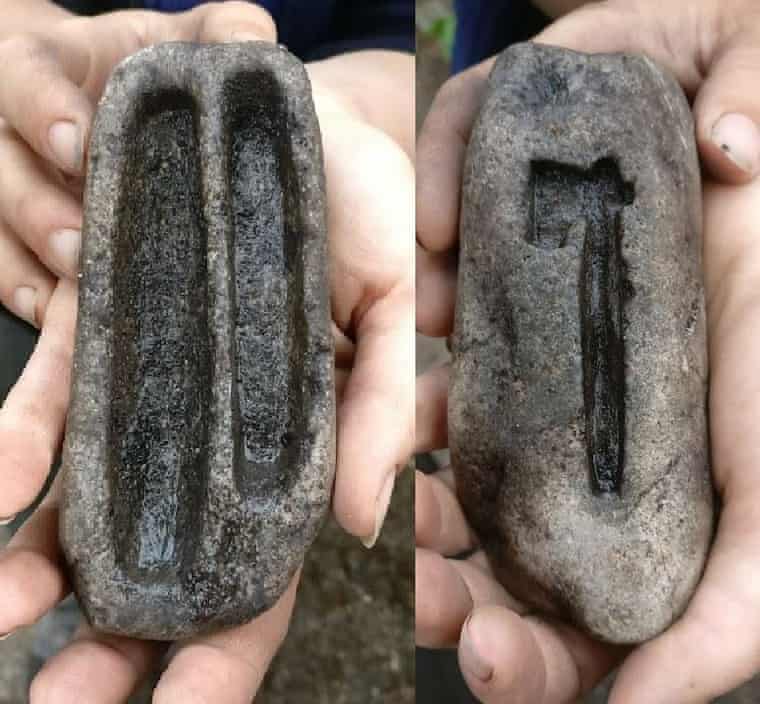Mould carved from soapstone for making ingots and and an axe amulet, both discovered at Ribe. Photograph: Museum of Southwestern Jutland
Excavations in Ribe, Denmark show that Viking culture was based on sophisticated production and trade. Is their brutal reputation unfair?
In an extraordinary moment captured on film this summer, the tuning pegs and neck of a lyre, a harplike stringed instrument, were carefully prised out of the soil of Ribe, a picturesque town on Denmark’s south-west coast. Dated to around AD720, the find was the earliest evidence not just of Viking music, but of a culture that supported instrument-makers and musicians.
The same excavation also found the remains of wooden homes; moulds for fashioning ornaments from gold, silver and brass; intricate combs made from reindeer antlers (the Viking equivalent of ivory); and amber jewellery dating to the early 700s.
Even more extraordinary, however, was the discovery that these artefacts were not for home consumption by farmers, let alone itinerant raiders. Instead, the Vikings who made them lived in a settled, urban community of craftsmen, seafarers, tradesmen and, it seems, musicians.
Read the rest of this article...

No comments:
Post a Comment